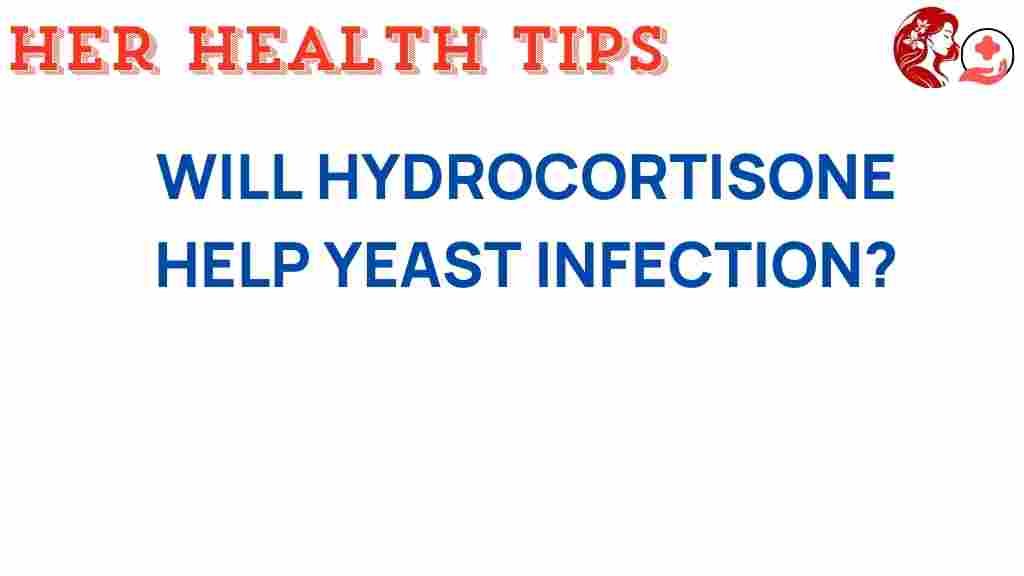Can Hydrocortisone Be the Secret Weapon Against Yeast Infections?
Yeast infections are a common health issue that can affect anyone, but they are particularly prevalent among women. These infections can cause discomfort, itching, and inflammation, leading many to seek effective treatments. One treatment option that has gained attention is hydrocortisone. This article explores the potential role of hydrocortisone in treating yeast infections, its benefits, and how it may fit into a comprehensive treatment plan.
Understanding Yeast Infections
Before diving into the specifics of hydrocortisone, it’s essential to understand what yeast infections are. They are typically caused by an overgrowth of the fungus Candida, which is naturally present in the body. Factors such as antibiotics, hormonal changes, or a weakened immune system can trigger this overgrowth.
Symptoms of Yeast Infections
Common symptoms of a yeast infection include:
- Itching and irritation in the affected area
- Thick, white discharge resembling cottage cheese
- Redness and swelling
- Pain during intercourse or urination
The Role of Hydrocortisone in Skin Care and Treatment
Hydrocortisone is a corticosteroid that helps reduce inflammation and suppress the immune response. It’s often used in various skin care products and treatments for inflammatory skin conditions. However, its role in treating yeast infections is not as straightforward.
How Hydrocortisone Works
Hydrocortisone can help alleviate inflammation associated with yeast infections, making it beneficial in managing symptoms such as:
- Redness
- Swelling
- Itching
By applying hydrocortisone topically, patients may experience relief from discomfort associated with the inflammatory response, but it’s crucial to note that hydrocortisone is not an antifungal agent. Therefore, it should not be viewed as a standalone treatment for yeast infections.
Combining Hydrocortisone with Antifungal Treatments
For effective management of a yeast infection, it’s essential to combine hydrocortisone with appropriate antifungal medications. Here’s a step-by-step approach:
Step 1: Consult Healthcare Professionals
Always seek medical advice from a healthcare provider before starting any treatment. They can confirm the diagnosis of a yeast infection and recommend suitable antifungal treatments.
Step 2: Use Antifungal Treatments
Antifungal treatments are crucial in combating the overgrowth of Candida. Common options include:
- Topical antifungals (e.g., clotrimazole, miconazole)
- Oral antifungals (e.g., fluconazole)
Step 3: Incorporate Hydrocortisone for Inflammation
After starting antifungal treatment, hydrocortisone can be applied to the affected area to help reduce inflammation and itching. Follow these guidelines:
- Apply a thin layer of hydrocortisone cream to the affected area as directed by your healthcare provider.
- Do not overuse hydrocortisone, as prolonged use can lead to skin thinning and other side effects.
Step 4: Monitor Symptoms
Keep track of your symptoms as you use both antifungal and hydrocortisone treatments. If symptoms persist or worsen, follow up with your healthcare provider for further evaluation.
Troubleshooting Tips for Yeast Infections
Even with treatment, some individuals may experience recurrent yeast infections. Here are some troubleshooting tips to help manage and prevent yeast infections:
Dietary Adjustments
Consider making dietary changes to help reduce the risk of yeast infections:
- Limit sugar intake, as sugar can fuel yeast growth.
- Incorporate probiotics to promote a healthy balance of bacteria.
- Stay hydrated to support overall health.
Maintain Proper Hygiene
Good hygiene practices are essential in preventing yeast infections:
- Wear breathable fabrics, such as cotton, to reduce moisture buildup.
- Avoid douching, as it can disrupt the natural balance of bacteria and yeast.
- Change out of wet clothing promptly after swimming or exercising.
Be Cautious with Antibiotics
If you are prescribed antibiotics, talk to your healthcare provider about the potential for yeast infections and whether you should take probiotics to minimize risk.
Conclusion: Is Hydrocortisone the Secret Weapon?
While hydrocortisone can alleviate the symptoms of inflammation associated with yeast infections, it is not a miracle cure. The most effective approach combines antifungal treatments with hydrocortisone to manage both the underlying cause and the symptoms. Always consult with a healthcare professional for proper diagnosis and treatment options.
For more information on managing yeast infections and the role of hydrocortisone, visit this resource. Remember, appropriate medical guidance is crucial in finding effective remedies and treatments for yeast infections.
By taking a comprehensive approach to treatment, including lifestyle changes and proper medication, you can effectively combat yeast infections and improve your skin care routine.
This article is in the category Conditions and created by HerHealthTips Team
